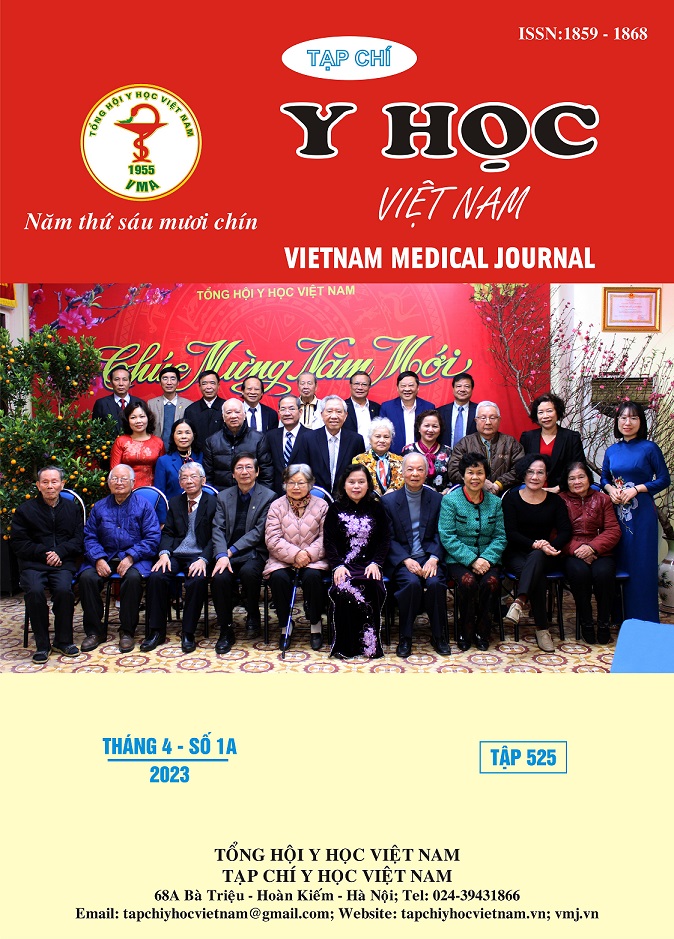EVALUATION OF CLINICAL CHARACTERISTICS AND COLLATERAL CIRCULATION ACCORDING TO GENDER IN PATIENTS WITH ACUTE ISCHEMIC STROKE
Main Article Content
Abstract
Objectives: 1) Evaluation of some clinical characteristics by gender in patients with acute ischemic stroke. 2) Assess the degree of collateral circulation on 3-phase CTA by gender. Subjects and methods: 118 patients (67 male and 51 female) who underwent 3-phase CTA in the first 7 days from symptom onset, inpatient treatment at the Stroke Department, Military Hospital 103 from November 2021 to July 2022. To evaluate some clinical characteristics at admission and discharge; assess the degree of CS on 3-phase, 64-sequence CTA film according to the Calgary; determine the relationship between clinical characteristics and the degree of CS with gender. Results: male/female ratio=1.31; women group were older (p>0.05), had the high rate of atrial fibrillation (p<0.05), diabetes (p>0.05), dyslipidemia (p>0.05), low rate of hypertension (p>0.05) and smoking (p<0.05); disorder of consciousness were more common in women; the average NIHSS score at admission was 2.97 points higher in women than in men (p<0.05), the rate of good CS in women was lower (p<0.05) and the degree of severe disability at discharge (mRS 5-6) was higher (p>0.05). Conclusion: Female group had a higher rate of atrial fibrillation and poor CS than male group. AIS in women had disorder of consciousness and the mean NIHSS score at admission were higher in men.
Article Details
Keywords
Acute ischemic stroke, gender, collateral status, 3-phase computed tomography angiography.
References
2. Liebeskind, D.S., Collateral circulation. Stroke, 2003. 34(9): p. 2279-2284.
3. Liu, L., et al., Guidelines for evaluation and management of cerebral collateral circulation in ischaemic stroke 2017. Stroke and vascular neurology, 2018. 3(3).
4. Lorenzo, C., et al., The National Cholesterol Education Program–Adult Treatment Panel III, International Diabetes Federation, and World Health Organization definitions of the metabolic syndrome as predictors of incident cardiovascular disease and diabetes. Diabetes care, 2007. 30(1): p. 8-13.
5. Mahmood, S.S., et al., The Framingham Heart Study and the epidemiology of cardiovascular disease: a historical perspective. The lancet, 2014. 383(9921): p. 999-1008.
6. West, R., Tobacco smoking: Health impact, prevalence, correlates and interventions. Psychology & health, 2017. 32(8): p. 1018-1036.
7. Menon, B.K., et al., Multiphase CT angiography: a new tool for the imaging triage of patients with acute ischemic stroke. Radiology, 2015. 275(2): p. 510-520.
8. Collaboration, A.P.C.S., Cholesterol, coronary heart disease, and stroke in the Asia Pacific region. International journal of epidemiology, 2003. 32(4): p. 563-572.
9. Tuttolomondo, A., et al., Relationship between diabetes and ischemic stroke: analysis of diabetes-related risk factors for stroke and of specific patterns of stroke associated with diabetes mellitus. J Diabetes Metab, 2015. 6(05): p. 544-551.
10. Fanou, E., et al., Effect of collaterals on clinical presentation, baseline imaging, complications, and outcome in acute stroke. American Journal of Neuroradiology, 2015. 36(12): p. 2285-2291.
11. Nogueira, R.G., et al., Thrombectomy 6 to 24 hours after stroke with a mismatch between deficit and infarct. New England Journal of Medicine, 2018. 378(1): p. 11-21.


